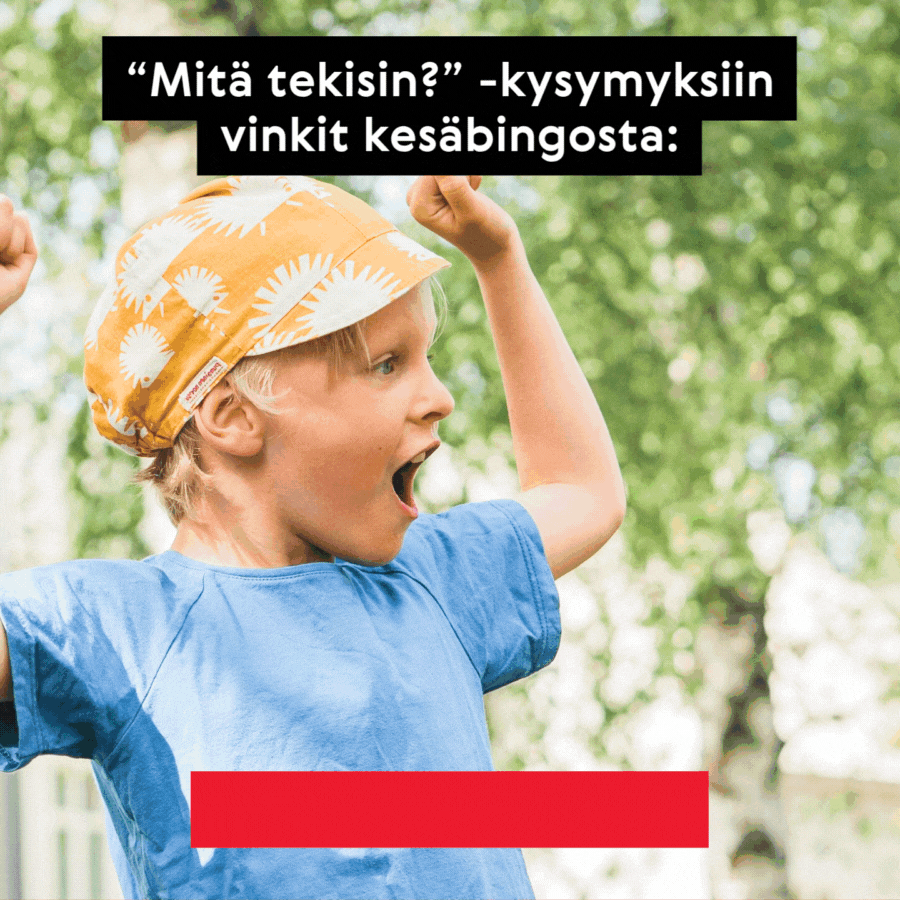Improving children’s motor skills
Children’s motor skills develop individually. You can support this development by observing your child during daily activities.
What are motor skills?
Motor development is an important part of children’s growth and overall development. Motor skills create the foundation for mobility, and the best time to learn these skills is from the age of 2 to 7.
Motor skills are divided into three categories: gross motor skills (such as running and jumping), fine motor skills (such as writing and tying shoelaces) and observational motor skills (such as perceiving the body in relation to the surrounding space, time and force).
Parents can observe and support their children’s motor skills. Children’s mobility should be observed in terms of three different skills: balancing (such as standing up, getting out of the way, rolling), moving (such as walking, running, jumping, climbing, hopping on one foot) and handling items (such as throwing, bouncing, catching).
How to support children’s motor skills
If you think your child needs support in motor skills, observe the child during daily activities. When you identify the situations and skills that need the most support, it’ll be easier to find help. Don’t hesitate to bring the subject up in daycare or school, and ask how the child is coping there.
Difficulties in motor development occur in about 5% to 6% of each age group, and less difficult motor challenges are observed in about one in ten children. Every child deserves an opportunity to build trust in their skills. This means that they should be praised for success, enthusiasm and making an effort. When they start trusting their skills, they’ll become more eager to exercise, which will improve their skills. As parents we can take our children to many places and environments where they can exercise. The more often they get to challenge their skills, practise, try different things and even fail, the better their skills will become.
Avoid warning children too much or constantly giving them instructions. By exploring different things and by sometimes failing too, children gain new experiences that build their confidence on that particular situation or skill.
Observation might cover things like:
Travelling to school
- Can the child cycle?
- Is the child able to travel all the way to school?
- How does the child cope in traffic?
Moving about
- Does the child often fall down, stumble or bump into things?
- Is it challenging or exceptionally slow to plan activities and set off with the child?
Meals
- Does the child often knock over the drinking class, soil clothes or drop cutlery?
- How does the child hold cutlery?
- Is eating slow compared to other children of the same age?
Dressing
- Is the child able to get dressed and undressed?
- Are clothes and shoes put on correctly?
- Can the child make it to school breaks?
- Can the child tie shoelaces and button up and unbutton clothing?
- Does the child get dressed while standing or while sitting on the floor?
Concrete ways to support your child
When you’ve identified the situations your child finds most challenging, you can look for exercises on skillilataamo (in Finnish) that you can do together at home to improve these particular skills. Clear information and tips on how to observe your child can create positive experiences in terms of moving. The skill cards have been divided into different categories based on basic motor skills. The categories are:
- Moving skills
- Balancing skills
- Handling skills.
Example
- My child has difficulty with buttons and shoelaces – Go to skillilataamo and look for exercises under “Handling skills“.
- My child is a clumsy runner – Look for exercises under “Moving skills”.
- My child keeps falling down or bumping into things – Look for exercises under “Balancing skills”.
Exercises that you can do with your child for the entire week if you like:
- Jumping over thresholds, jumping to reach for a tree branch
- Keeping a posture, e.g. while brushing teeth
- Drawing with a paintbrush, marker pen or a stick
- Knocking a ball around, throwing a beanbag
- Threading wooden beads on a string.
Ask help from daycare, school, public health nurse or through hobbies if necessary. The purpose is not to make all children super-agile movers but to give them an opportunity to find their strengths as movers and to practise the skills that need improving.
This website has been developed together with the Innostu liikkumaan -project that provides information and support to improve children’s motor skills.
